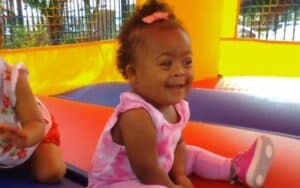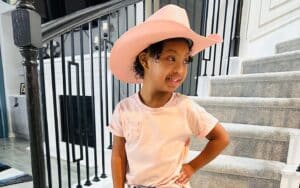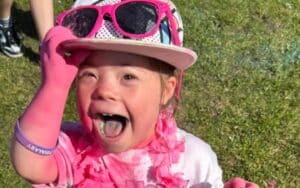Language development is a cornerstone in a child’s growth, influencing their communication skills, academic achievements, and social interactions. Integrating fun into language learning activities not only makes them engage but also significantly enhances a child’s ability to acquire language. This article will explain how does fun support language learning and share practical ways to incorporate fun into daily activities for children at different developmental stages.

The Neuroscience Behind Fun and Language Acquisition
When children engage in enjoyable activities, dopamine is released in their brains, which is linked to pleasure and learning. This enhances neural connections, aiding in the absorption and retention of new language. Fun activities create a positive environment, reducing stress and anxiety, which are barriers to learning. As a result, learning is more effective when it is enjoyable.
Ways to Incorporate Fun into Language Learning
1. Interactive Storytelling
- Infants: Reading aloud with expressive tones and facial expressions.
- Toddlers: Picture books with repetitive phrases.
- Preschoolers: Read storybooks, discuss characters and events, encouraging predictions.
- School-age Children: Read and create stories together or discuss alternate endings to existing stories.
2. Music and Language
- Infants: Gentle lullabies and soft rhythms.
- Toddlers: Simple nursery rhymes with actions.
- Preschoolers: Storytelling songs, counting songs.
- School-age Children: Learning songs in foreign languages, songwriting.

3. Play
- Infants: Engaging in simple play activities like rolling a ball back and forth while naming actions and objects.
- Toddlers: Participating in imaginative play, using simple sentences to describe actions.
- Preschoolers: Group play activities that involve pretend and storytelling.
- School-age Children: Complex play scenarios that involve problem-solving, strategy, and extensive use of language and narratives.
4. Language Games
- Infants: Simple sound-making games, peek-a-boo with words.
- Toddlers: Naming games with household objects.
- Preschoolers: Word-matching, picture games.
- School-age Children: Scrabble, word puzzles, vocabulary apps.
5. Artistic Expression
- Infants: Talking about colors and shapes while they observe.
- Toddlers: Naming colors and shapes during art activities.
- Preschoolers: Describing their drawings or paintings.
- School-age Children: Writing stories about their artwork.
6. Technology Integration
- Infants: Listening to simple songs or sounds through apps.
- Toddlers: Interactive vocabulary apps.
- Preschoolers: Games focusing on word and sound recognition.
- School-age Children: Apps for writing and storytelling.

7. Outdoor Adventures
- Infants: Describing the outdoor environment while walking.
- Toddlers: Learning names of animals and plants.
- Preschoolers: Nature scavenger hunts with vocabulary.
- School-age Children: Exploring habitats, learning related vocabulary.
8. Cooking Together
- Infants: Talking about food items while cooking.
- Toddlers: Naming ingredients.
- Preschoolers: Following simple recipe steps.
- School-age Children: Reading recipes, discussing cooking science.

9. Role-Playing Games
- Infants: Describing actions during pretend play.
- Toddlers: Pretend play with family roles.
- Preschoolers: Role-playing jobs, functions.
- School-age Children: Complex scenarios in different settings.
10. Reading Together
- Infants: Pointing and naming objects in picture books.
- Toddlers: Naming objects in picture books.
- Preschoolers: Discussing story and characters.
- School-age Children: Reading aloud, discussing themes.

11. Language Immersion Trips
- Infants: Exposing to language in community places.
- Toddlers: Visits to community places and naming what you see. Take photos for latter discussion.
- Preschoolers: Participate in cultural festivals, events.
- School-age Children: Traveling to areas in the community and outside the community. Learning words associated with new experiences.
12. Dance and Movement
- Infants: Gently moving to music and doing fingerplays.
- Toddlers: Dancing to music, learning body part names.
- Preschoolers: Following dance routines with directions.
- School-age Children: Learning cultural dances, vocabulary.
13. Family Routines
- Infants: Talking through daily routines.
- Toddlers: Naming and describing foods during meals.
- Preschoolers: Describing day-to-day activities.
- School-age Children: Discussing the importance, steps of routines.
14. Family Rituals
- Infants: Simple language during bedtime rituals.
- Toddlers: Bedtime rituals with language cues.
- Preschoolers: Participating in family rituals, using language.
- School-age Children: Understanding and discussing the meaning behind family rituals.

15. Celebrations and Traditions
- Infants: Introducing words related to family celebrations.
- Toddlers: Learning words related to family celebrations through hands-on experiences.
- Preschoolers: Helping in planning celebrations, using related vocabulary.
- School-age Children: Discussing the history and significance of family traditions and celebrations.

16. Nature and Environmental Exploration
- Infants: Naming and describing natural elements during outdoor time (e.g., the flowers, sky, trees).
- Toddlers: Exploring gardens or parks, learning names of flowers and insects.
- Preschoolers: Simple gardening activities, learning about plant growth and the environment.
- School-age Children: Participating in environmental conservation activities, learning about ecosystems and biodiversity.
FAQs
- How can I integrate fun into daily routines to enhance my child’s language development?
- Start by incorporating language-rich activities into regular routines. For example, during mealtimes, discuss the colors and textures of food, or create small stories about the day’s activities. During bath time, introduce new words related to water and hygiene. The key is to make these interactions engaging and conversational.
- What are some simple yet effective fun activities to promote language learning at home?
- Answer: Engage in playful activities like singing songs, playing word-based games, or doing simple arts and crafts while discussing what you’re creating. Use household items for pretend play, encouraging your child to describe their actions and the objects they’re using. These activities not only make learning fun but also seamlessly integrate language development into your child’s playtime.
- Is it beneficial to use technology as part of fun language learning activities?
- Answer: Yes, technology can be a valuable tool when used in moderation. Educational apps and interactive games can make learning new words exciting. Watching educational shows or videos in the target language can also be beneficial, especially if followed by discussions or related activities. However, it’s essential to balance screen time with other interactive and physical activities.
- How can I use outdoor activities to promote language development?
- Answer: Outdoor activities offer a rich environment for language development. For example, when on a walk, talk about what you see, hear, and smell, introducing new vocabulary related to nature and the outdoors. Gardening together can also be a great way to learn about plant life and the environment, using specific terms and engaging in hands-on activities.
Additional Resources
- Why Fun, Curiosity & Engagement Improves Learning: Mood, Senses, Neurons, Arousal, Cognition – Cognition Today
- The Power of Play: How Fun and Games Help Children Thrive – HealthyChildren.org
- Why should we make learning fun for children? – Young Engineers – Singapore
- 20+ Ways to Make Learning Fun – The Pathway 2 Success
Summary/Conclusion
Incorporating fun into language learning is crucial for effective language acquisition in children. By engaging in various enjoyable activities suited to their developmental stage, children can naturally develop language skills. These activities should be diverse, including storytelling, music, art, outdoor exploration, and technology. They should also be integrated into everyday family routines, rituals, and traditions. This holistic approach ensures that language learning is not only effective but also a delightful experience for both the child and the parents.




0 Comments